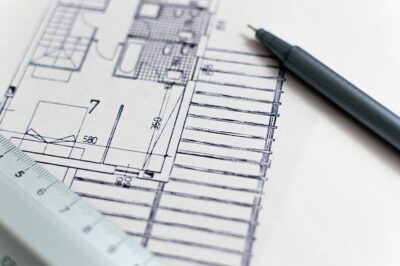The real estate market is an arena where aesthetics and first impressions significantly influence decision-making. Within this context, the concept of home staging emerges as a powerful tool in the arsenal of a successful realtor. Home staging refers to the strategic curating and organizing of a property to enhance its appeal to potential buyers. This involves a delicate blend of design, marketing, and psychology aimed at showcasing a property’s best features while minimizing its less attractive aspects.
In this article, we’ll explore a variety of home staging strategies that can transform your real estate business. Along with other strategies that can effectively position your listings in the market, outline these home staging tactics in your business plan. Use this real estate business plan template as a reference to create a robust plan.
The Power of First Impressions
The first element to consider is the property’s curb appeal. As the initial point of contact between a potential buyer and the home, first impressions carry significant weight. Invest in enhancing the front yard’s appearance with clean landscaping, freshly painted doors, and ensuring windows are sparkling clean. A home that appears well-maintained from the outside sets a positive tone for the rest of the tour.
Capitalize on Natural Light
The next vital strategy is optimizing natural light. A well-lit home feels more welcoming and spacious. Buyers need to envision themselves living in the space, and the abundance of natural light can help spark this vision. To achieve this, ensure all curtains and blinds are open during showings. If a room has limited windows, use mirrors strategically to reflect light and give the impression of a brighter, larger space.
Create a Neutral Canvas
Another important home staging strategy involves creating a neutral canvas. While it’s necessary for a home to have character, potential buyers should be able to envision their own belongings and style in the space. To achieve this, opt for neutral paint colors on the walls, eliminate personal items, such as family photos, and choose subtle furniture and decor. This allows potential buyers to imagine the home as their own, ultimately increasing the likelihood of receiving an offer.
Declutter and Depersonalize
The next step involves decluttering and depersonalizing the home. This goes hand in hand with creating a neutral canvas, but it also involves removing unnecessary items that take up space. A clutter-free home appears more spacious, which is always a selling point. Depersonalizing refers to removing items that are overtly taste-specific or personal, making it easier for potential buyers to picture their life in the home.
Stage the Key Rooms
Another fundamental strategy revolves around prioritizing key rooms. Buyers tend to focus on the living room, master bedroom, and kitchen. As such, these areas should receive the most attention when staging. Whether you bring in new furniture, upgrade fixtures, or invest in a deep clean, the efforts put into these rooms could prove crucial in securing a sale.
Utilize Space Effectively
One additional home staging strategy involves the effective utilization of space. Every room in the house needs to have a clear purpose. This means that a spare room shouldn’t just be used for storage or left empty, but rather staged as a home office, guest room, or even a home gym. This not only makes the space more attractive, but also helps potential buyers understand how they can utilize every corner of the house.
Emphasize Lifestyle and Emotion
The next powerful home staging strategy is tapping into the emotions of potential buyers by emphasizing lifestyle elements. This approach moves beyond just presenting a well-organized, clean, and neutral space. This is also about creating an environment that resonates with the buyer’s aspirations. To accomplish this, stage areas that suggest a specific lifestyle: a cozy reading nook by the window, an elegantly set dining table for entertaining, or a tranquil outdoor space for relaxation. These staged scenes help potential buyers emotionally connect with the property, making them more likely to put in an offer as they can envision the life they would lead in the home.
Implement Small Upgrades
The final home staging strategy worth considering involves making small upgrades that can have a significant impact. This doesn’t mean undergoing a full renovation, rather, it refers to relatively low-cost updates that can significantly increase a home’s appeal. These can include updating old light fixtures, replacing worn-out cabinet handles, or even putting a fresh coat of paint on the walls. Small details can make a big difference in the overall aesthetic of a home.
Home staging is a powerful tool that realtors can leverage to make their listings stand out. By implementing these strategies, you can transform a property into a highly desirable home, improving its marketability and speeding up the sales process.









